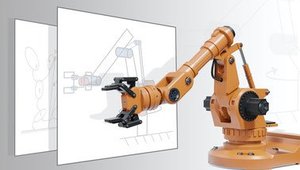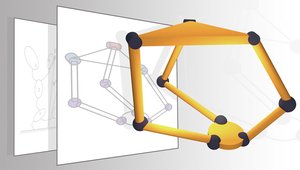Modeling and Simulation of Multibody Systems
Professional Certificate on edX.org
Click here for details about this Professional Certificate on edX.org.
What you will learn
- Analyze the kinematic and dynamic properties of multibody systems such as road and railway vehicles, robotic devices, transmissions, prostheses and human body.
- Translate real applications into ready-to-use multibody models in C, Python or MATLAB.
- Understand the kinematic and dynamic behavior of multibody applications thanks to advanced numerical methods and solvers.
Program Overview
What is the similarity between a car suspension, a robot, a railway vehicle and a human body? They are all complex mechanical systems composed of rigid bodies moving through articulated joints and submitted to forces and torques. Their study is the basis of the scientific field called multibody dynamics.
Whether you are an engineer designing a vehicle, a technician building a robot or setting up a prothesis, or a physiotherapist studying a human body motion, you might need to model and analyze the behavior of such multibody systems. You will learn that skill through this program.
Although an advanced program, your learning will be very progressive. It starts from the basic principles of Newtonian mechanics and then proposes to solve everyday applications of increasing complexity, using the free symbolic software Robotran (www.robotran.be) that generates the nonlinear equations in C, Python or MATLAB language.
The advantage of the symbolic generation is to be able to deal with realistic three-dimensional applications without having to generate the nonlinear equations of motion yourself, by hand or with a commercial numerical software.
The program successively covers the following topics:
- Recall and notations of Newtonian mechanics
- Principles of the multibody formalism
- Introduction to symbolic modeling (with Robotran)
- Numerical simulation of simple cases
- Modeling of external and internal forces
- Treatment of kinematic constraints
- Analysis techniques: direct/inverse kinematics, inverse dynamics, time integration, equilibrium and modal analysis.
Both courses combine videos, exercises, projects, continuous assessment and final exams so that you’ll gain maximum practice and deep learning in multibody system dynamics.
Courses in this program
Modeling and Simulation of Multibody Systems - Part I
10–11 hours per week, for 14 weeks
Vehicles, bicycles, cranes, human body and robots are multibody systems. Learn how to model them and compute their kinematic and dynamic characteristics, such as velocities, accelerations and forces.
Modeling and Simulation of Multibody Systems - Part II
9–10 hours per week, for 14 weeks
90% of daily life multibody systems contain loops of bodies, e.g. vehicle or bike suspensions, parallel manipulators or robots, and musculoskeletal systems. They can also include joint constraints. In this second course about multibody systems, learn how to model them and how to deal with more advanced numerical analyses.
Job Outlook
- As an engineer or qualified technician, enhance your attractivity towards industries facing complex kinematic and dynamic problems e.g.: railway systems, vehicles, transmission or suspension systems, robotics, etc.
- Get skills necessary for research and development in emerging and specialized challenges involving multibody system dynamics: innovative vehicles for sustainable mobility, human rehabilitation devices, digital twin for predictive maintenance, etc.



